Explained: All Types Of Hybrid Electric Vehicle Technologies!

- Mild, full, and plug-in hybrids offer different levels of electric assistance.
- Full hybrids enable electric-only low-speed driving without external charging.
- PHEVs provide 20-80 km EV range and appear mostly in India’s premium segment
Hybrid technology has steadily become a practical choice for Indian car buyers who are looking for lower running costs without jumping fully into the EV ecosystem. With city commutes growing longer and fuel expenses constantly on buyers’ minds, hybrids jump in as a middle path. It offers better efficiency than regular petrol or diesel cars without the charging dependence of pure EVs.
Also Read: Best Chauffeur Driven Cars Under Rs 20 Lakh

But the hybrid space itself has layers: mild hybrids, full hybrids, plug-in hybrids, and then the deeper engineering behind them, such as parallel or series-parallel layouts. Here’s a closer look at everything that sits under the “hybrid” umbrella today.
Also Read: Cars With The Highest Ground Clearance In India
Mild Hybrid
Mild hybrids may not be full electrics, but a fair bit is happening under the skin. The core of the system is a motor-generator, sometimes called an ISG (Integrated Starter-Generator), paired with either a small 12-volt or a stronger 48-volt battery. Unlike a strong hybrid, the motor here isn’t meant to drive the wheels on its own. Instead, it supports the engine in simple but effective ways.
The first job it handles is idle start-stop. When the car is stationary at a signal, the system switches the engine off to save fuel. As soon as the driver lifts off the brake or taps the accelerator, the motor-generator spins the engine back to life quickly and smoothly. This cuts fuel consumption in slow city traffic without any effort from the driver.
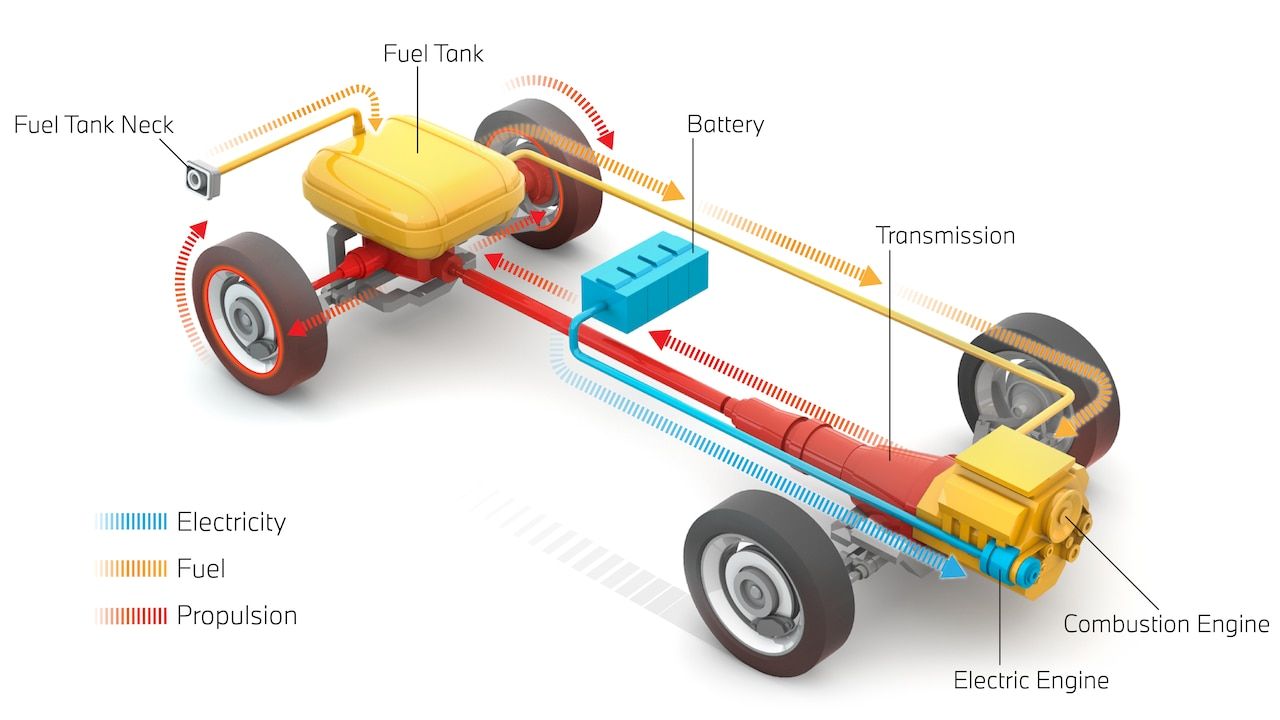
The second part is torque assist. During a quick getaway or while building speed, the electric motor provides a small push to help the engine. It’s not a big shove, just enough to keep the engine from working too hard at low RPMs. This makes the car feel slightly smoother and reduces the fuel needed during these short bursts.
Then there’s energy recuperation. When the driver lifts off the accelerator or applies the brakes, the motor-generator works in reverse, acting as a small generator. It converts the car’s motion into electrical energy, topping up the battery each time the car slows down. This reclaimed energy is what powers the start-stop function and the torque assist, making the whole setup self-sustaining.
Brands like Maruti Suzuki typically use 12V systems, while manufacturers such as Mercedes-Benz and some Toyota models, most recently the Fortuner Neo, use 48V setups.
All of this happens quietly in the background. The driver doesn’t need to press any special buttons or change the way they drive. The system just chips in whenever it can, helping with smoothness, improving efficiency a little, and lowering emissions without altering the car’s overall character.
Strong/Full Hybrid (HEV)
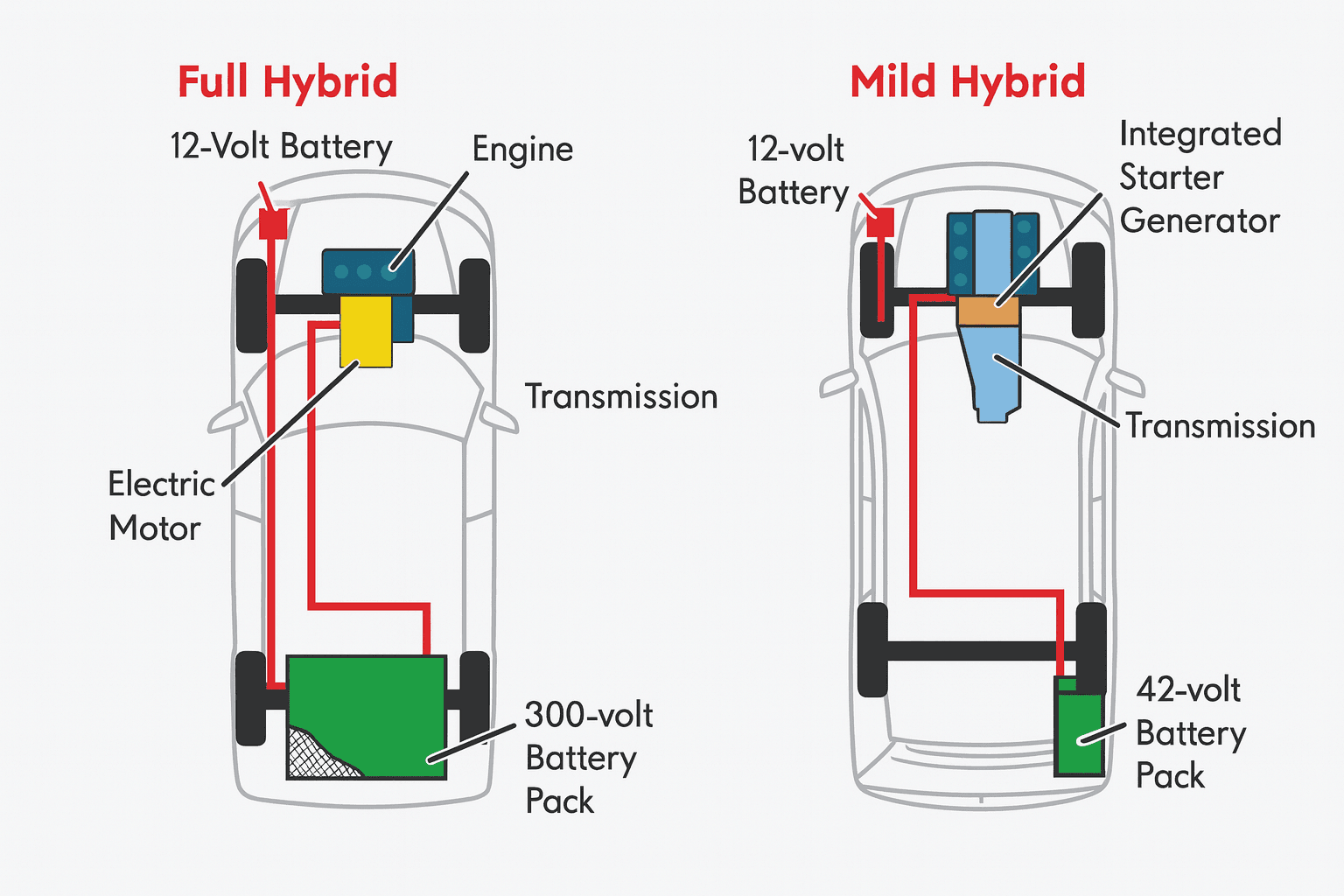
Also Read: Best Driver's Cars You Can Buy In India Under Rs. 1 Crore
Strong/Full Hybrid (HEV)
Full hybrids take several steps further than mild hybrids. Instead of simply assisting the engine, a full hybrid system can actually move the car on electric power alone at low speeds. This allows the vehicle to glide silently through traffic, cut fuel use significantly, and make the most of stop-go city conditions where engines typically waste the most fuel.
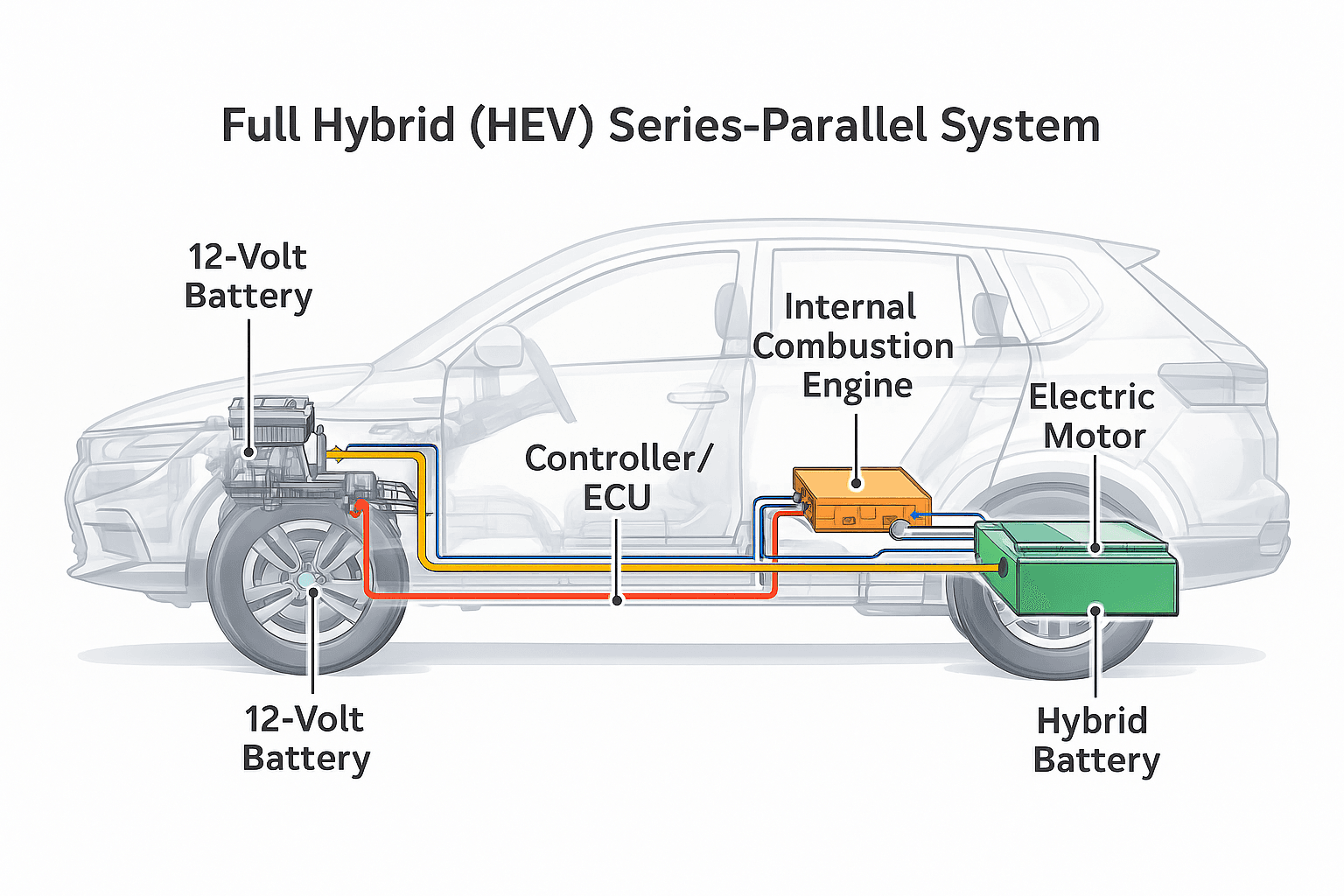
One of the highlights of a full hybrid system is its ability to switch between three modes: EV mode (electric motor only), engine mode, or a combined mode where both power sources work together. The system decides this on the fly, based on load, speed, and efficiency. Drivers don’t need to intervene; there are no chargers to plug in or buttons to press unless the car offers an optional EV mode shortcut.
Most full hybrids in India use a series-parallel, or power-split, architecture. This setup brings together the strengths of two different hybrid types. At city speeds, it behaves somewhat like a series hybrid: the electric motor handles most of the driving, and the engine steps in mainly to generate power or assist when necessary. On open roads, it shifts to a more parallel-hybrid-like operation, allowing the engine to take direct control of propulsion, where it’s most efficient.
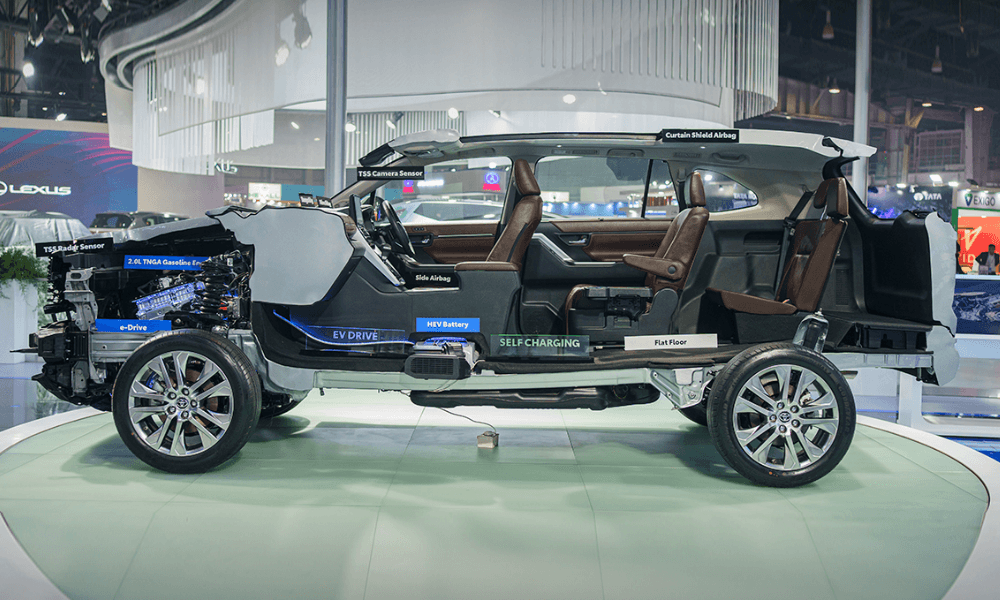
In real-world Indian use, this adaptability is what makes full hybrids such a popular choice. Cars like the Maruti Suzuki Grand Vitara, Toyota Urban Cruiser Hyryder, Honda City e:HEV, Toyota Innova Hycross and Toyota Camry deliver strong city efficiency because the electric motor is used extensively in slow-moving traffic. Many drivers report high fuel economy numbers simply because the engine stays off more often than expected.
Globally, there are full hybrids that use a pure parallel layout, but these are rare in India. The series-parallel design fits India’s traffic patterns better, especially in crowded city environments where frequent starts and stops give the electric motor plenty of opportunities to take over.
Also Read: Top 5 Most Fuel-Efficient Petrol Cars In India
Plug-in Hybrid

Plug-in hybrids sit at the top end of the hybrid spectrum because they offer something neither mild hybrids nor full hybrids can: a usable, everyday electric-only driving range. While a full hybrid relies entirely on regenerative braking and the engine to charge its small battery, a plug-in hybrid features a much larger battery pack that can be charged externally, at home, at work, or through public chargers.
This extra battery capacity allows the electric motor to run the car for anywhere between 20 km and 80 km in typical EV mode driving, depending on model and conditions. For many city users, that range is enough to cover the daily commute without using the petrol engine at all. Once the battery depletes, the vehicle works like a full hybrid.
In EV mode, the car drives like a proper electric vehicle. In hybrid mode, the system optimises energy use, recovering power through regenerative braking and using the engine only when required.
In India, plug-in hybrids remain limited mostly to the premium and luxury segments. Notable examples include the BMW XM and the Lamborghini Urus SE.
Trending News
 9 mins readBest Chauffeur Driven Cars Under Rs 20 Lakh
9 mins readBest Chauffeur Driven Cars Under Rs 20 Lakh 4 mins readBest Driver’s Cars In India Under Rs 50 Lakh
4 mins readBest Driver’s Cars In India Under Rs 50 Lakh 3 mins readTop 5 Sports Bikes Under Rs. 2 Lakh
3 mins readTop 5 Sports Bikes Under Rs. 2 Lakh
Latest News
 Jafar Rizvi | Nov 24, 2025Tata Sierra Launch Tomorrow: What To ExpectTata Motors will finally reveal all the details of the Sierra tomorrow, including its prices, variants, engine options, features and delivery timelines.3 mins read
Jafar Rizvi | Nov 24, 2025Tata Sierra Launch Tomorrow: What To ExpectTata Motors will finally reveal all the details of the Sierra tomorrow, including its prices, variants, engine options, features and delivery timelines.3 mins read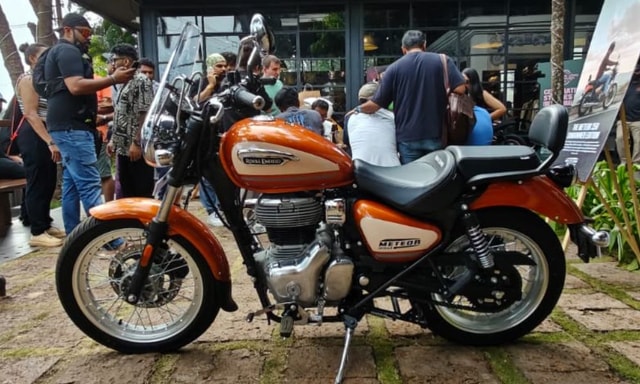 car&bike Team | Nov 23, 2025Royal Enfield Meteor 350 Sundowner Orange Edition: In PicturesThe new Sundowner Orange is now the most expensive option in the Meteor 350 range and gets some accessories as standard.1 min read
car&bike Team | Nov 23, 2025Royal Enfield Meteor 350 Sundowner Orange Edition: In PicturesThe new Sundowner Orange is now the most expensive option in the Meteor 350 range and gets some accessories as standard.1 min read car&bike Team | Nov 23, 2025Women’s Cricket World Cup Winner Shafali Verma Takes Delivery Of MG CybersterVerma is one of the youngest women to have represented India on the international stage in all three formats of the game.1 min read
car&bike Team | Nov 23, 2025Women’s Cricket World Cup Winner Shafali Verma Takes Delivery Of MG CybersterVerma is one of the youngest women to have represented India on the international stage in all three formats of the game.1 min read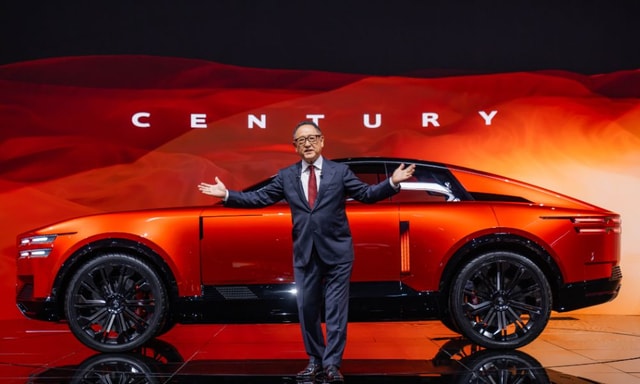 Shams Raza Naqvi | Nov 23, 2025Toyota’s Multi-Pathway Strategy Takes Center Stage At Japan Mobility ShowThe Toyota Group is continuing to work on a multiple fuel technologies that will cater to varied needs of different markets in the world5 mins read
Shams Raza Naqvi | Nov 23, 2025Toyota’s Multi-Pathway Strategy Takes Center Stage At Japan Mobility ShowThe Toyota Group is continuing to work on a multiple fuel technologies that will cater to varied needs of different markets in the world5 mins read car&bike Team | Nov 22, 2025Royal Enfield Bullet 650: In PicturesThe Bullet 650 made its debut in India at Motoverse 2025.2 mins read
car&bike Team | Nov 22, 2025Royal Enfield Bullet 650: In PicturesThe Bullet 650 made its debut in India at Motoverse 2025.2 mins read Jafar Rizvi | Nov 22, 2025Yamaha XSR155 Cafe Racer, Scrambler Kit Prices RevealedThe Cafe Racer kit entails three additional accessories, while the Scrambler gets five add-ons.2 mins read
Jafar Rizvi | Nov 22, 2025Yamaha XSR155 Cafe Racer, Scrambler Kit Prices RevealedThe Cafe Racer kit entails three additional accessories, while the Scrambler gets five add-ons.2 mins read
 Janak Sorap | Nov 19, 2025Hero Xpulse 210 Vs Kawasaki KLX 230 Comparison Review: Dual-Sport DilemmaWith a price difference of just Rs 12,000, which of the two dual-sport motorcycles is meant for you?1 min read
Janak Sorap | Nov 19, 2025Hero Xpulse 210 Vs Kawasaki KLX 230 Comparison Review: Dual-Sport DilemmaWith a price difference of just Rs 12,000, which of the two dual-sport motorcycles is meant for you?1 min read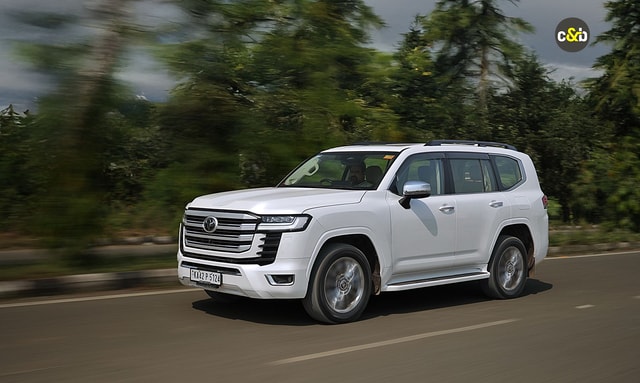 Jaiveer Mehra | Nov 17, 20252025 Toyota Land Cruiser 300 Review: Beast From The EastThe Land Cruiser name may have a long and storied history, but does it fit the bill for an Rs 2 crore-plus SUV in India?13 mins read
Jaiveer Mehra | Nov 17, 20252025 Toyota Land Cruiser 300 Review: Beast From The EastThe Land Cruiser name may have a long and storied history, but does it fit the bill for an Rs 2 crore-plus SUV in India?13 mins read Seshan Vijayraghvan | Nov 17, 2025Kia Syros 1.0 Turbo Petrol: 6000 km Long-Term Review – Final Report!I lived with the Syros for more than 6000 km, over 3 months, and in this final report, I am going to talk about the Pros, the Cons, and everything in between.1 min read
Seshan Vijayraghvan | Nov 17, 2025Kia Syros 1.0 Turbo Petrol: 6000 km Long-Term Review – Final Report!I lived with the Syros for more than 6000 km, over 3 months, and in this final report, I am going to talk about the Pros, the Cons, and everything in between.1 min read car&bike Team | Nov 13, 2025Numeros n-First First Ride Review: Motorbike-Inspired EV ScooterWe test rode the n-First i-max+ in busy Bengaluru roads recently. It’s ability to tackle city roads well and comfortable seats make it a scooter worth a check. Read on to know if it makes sense for you to consider buying it.3 mins read
car&bike Team | Nov 13, 2025Numeros n-First First Ride Review: Motorbike-Inspired EV ScooterWe test rode the n-First i-max+ in busy Bengaluru roads recently. It’s ability to tackle city roads well and comfortable seats make it a scooter worth a check. Read on to know if it makes sense for you to consider buying it.3 mins read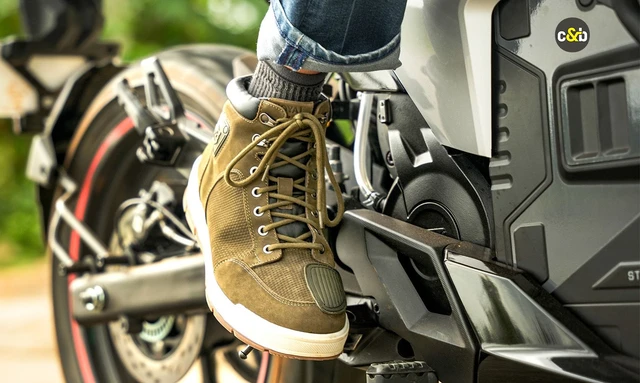 Preetam Bora | Nov 12, 2025Royal Enfield Nomad WP Mid Ankle Riding Boots ReviewThe Royal Enfield Nomad Waterproof mid-ankle boots have robust construction, good fit and a waterproof liner as well. But are they worth Rs. 7,500 or should you give them a pass?4 mins read
Preetam Bora | Nov 12, 2025Royal Enfield Nomad WP Mid Ankle Riding Boots ReviewThe Royal Enfield Nomad Waterproof mid-ankle boots have robust construction, good fit and a waterproof liner as well. But are they worth Rs. 7,500 or should you give them a pass?4 mins read






























































































































